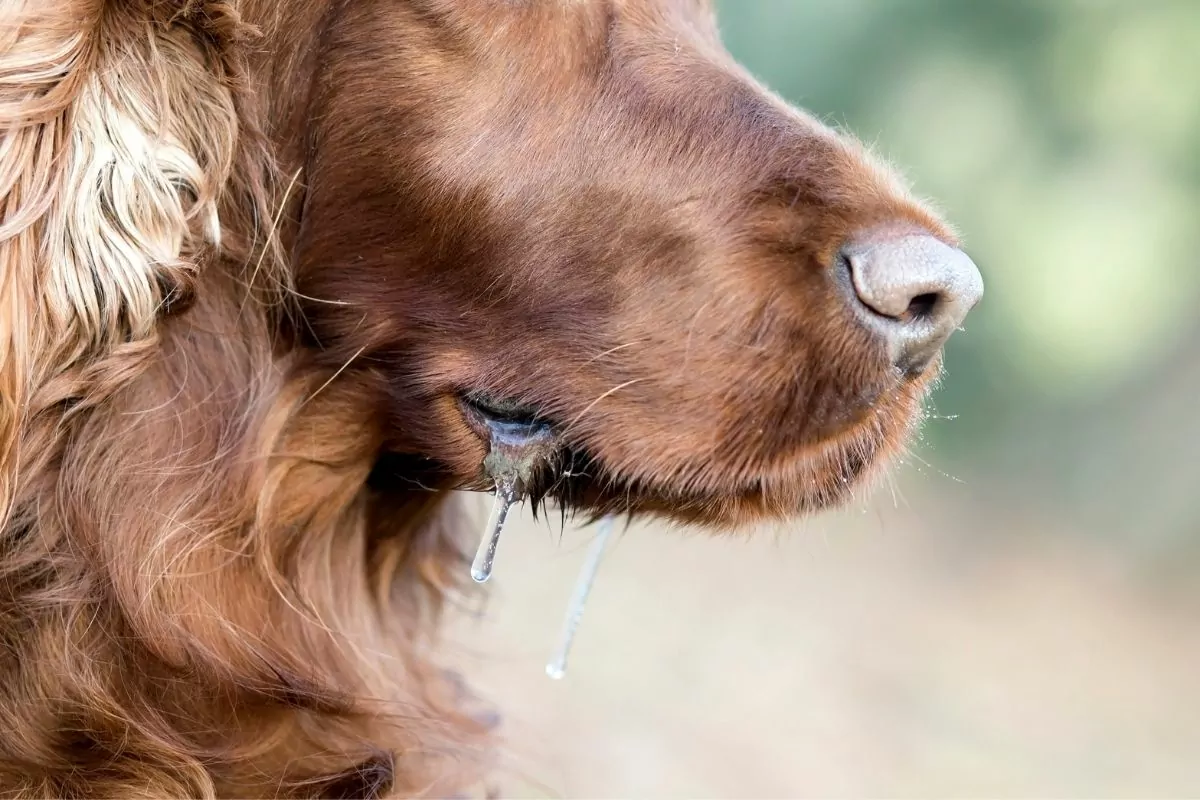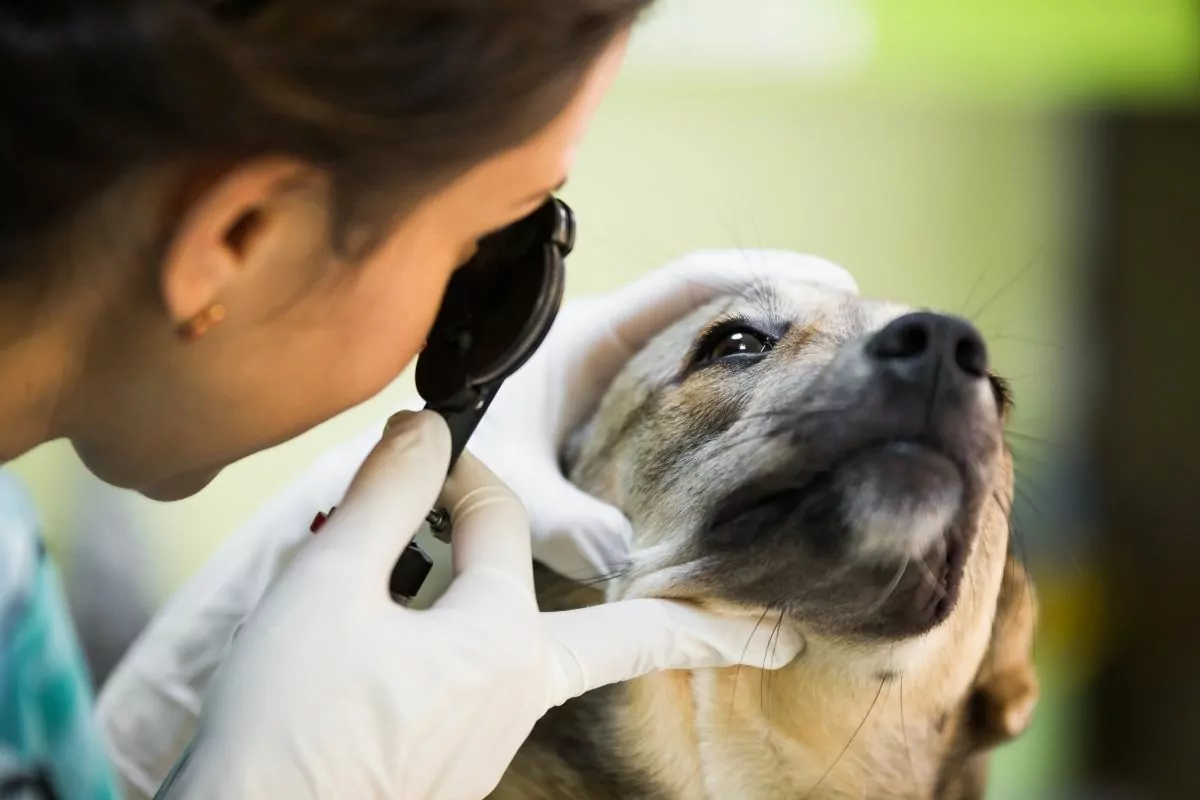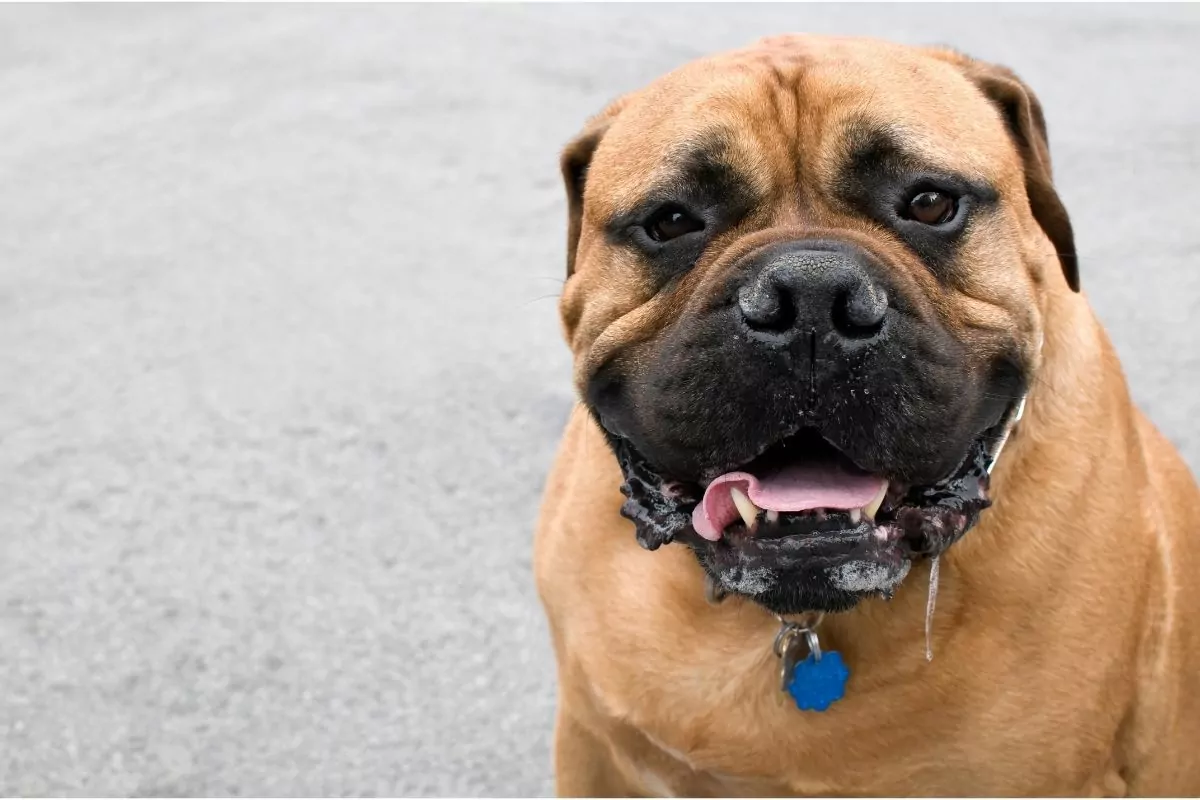Dog slobber is one thing, but is your dog drooling a lot?
Unfortunately, hypersalivation in dogs or excessive salivation is a common condition that gives them no peace. This condition makes the dog constantly lick its lips and tongue. The problem is that saliva contains bacteria and viruses that can cause serious health problems. If you don’t treat this issue, these conditions can even result in death.
There are several ways to treat hypersalivation in dogs. Let’s find out more from this piece.

Why is my Dog Drooling?
So why is your dog drooling? There are many reasons for having a drooling puppy. The most obvious reason is if your dog has an oral disease. But even healthy dogs who do not have any medical issues tend to drool.
Some breeds of dogs are prone to having the problem. For example, German Shepherds and Great Danes are said to drool excessively. In addition, some dogs may like to stick their tongues out when happy or excited.
It can also be associated with stress, fear, anxiety, or other issues. Even puppies sometimes drool because of teething pain. It may take weeks before you start noticing this issue. So if you have ever wondered, “why is my dog drooling?”. You now have an idea why that happens.
What is Ptyalism in Dogs?
Ptyalism or excessive drooling in dogs is one of the forms of hypersalivation. It occurs when there is too much saliva produced by the mouth, which causes it to dribble onto the fur coat around the face, neck, or paws.
It affects both male and female dogs. Usually, ptyalism is hereditary, but it may occur with certain diseases in dogs. Different kinds of medications can also trigger this type of excessive saliva production.
This condition can be dangerous if allowed to progress. One significant danger is bacteria entering the bloodstream through the damaged skin. This may lead to secondary infections. In addition, sometimes, the excess saliva gets on their eyes and ears.
And even if the salivary glands themselves are intact, the ducts, wherever cannot drain properly, bacteria may enter the body, causing infection.
The Two Types of Situations That Cause Hypersalivation in Dogs
Two types of situations that cause dogs to start drooling excessively are:
Dry Mouth Causes
Dry mouth can result from several things, including tooth decay, gum disease, dry food, allergies, diabetes, kidney failure, liver failure, thyroid disorders, cancer, etc. When the mouth becomes dry, the saliva glands become less active. As a result, the amount of saliva produced decreases.
Medications Can Trigger Excess Saliva Production
Some medications, such as antibiotics, antihistamines, steroids, antacids, diuretics, laxatives, etc., can cause dry mouth. These drugs reduce the flow of saliva in the mouth. They also increase the risk of developing dental problems.
Symptoms of Hypersalivation in Canines
If your dog shows symptoms of hypersalivation, you should immediately seek veterinary care. You need to know what kind of treatment would work best for them. Here are some common symptoms of hypersalivation in dogs that you should watch out for:
1. Drooling
2. Watery eyes
3. Bad breath
4. Sore throat
5. Bacterial infection
6. Ears & nose drying out
8. Redness around the tongue
9. Loss of appetite
10. Weight loss
11. Difficulty breathing
12. Vomiting
13. Diarrhea
14. Painful urination
15. Fainting
16. Seizures
17. Lethargy
18. Death
Causes of Canine Ptyalism
The following are some of the leading causes of canine ptyalism:
Tooth Decay
Tooth decay can cause excessive dog salivation. Failing to treat tooth decay could lead to severe problems. Your vet should check your pet’s teeth regularly. They will examine them thoroughly and clean them using special tools. Then, the dentist will apply fluoride treatments to help prevent further damage.
Gum Disease
Gum disease can also cause excessive saliva production. It is the most common reason why dogs drool excessively. In addition, the gums experience inflammation due to bacterial plaque buildup. This leads to bleeding within the gums. If not treated, the inflammation can spread throughout the entire mouth.
Allergies
Allergic reactions can also cause hypersalivation in pets. These allergic reactions include asthma, dermatitis, urticaria, anaphylaxis, and rhinitis.
Saliva with a White Foamy Consistency
This type of saliva has a very thick consistency. It is usually found when there is a problem with the salivary glands or the ducts where saliva drains from the mouth.
Unusual Odor Coming from The Mouth
When this happens, your pet may have a foul smell coming from its breath. It could indicate that they have a yeast infection.
How is Hypersalivation in Dogs Diagnosed?
There are two ways to diagnose hypersalivation in dogs. One way is through physical examination, while the other is through laboratory tests:
Physical Examination
A comprehensive physical examination will be performed by your veterinarian first. During this process, they will look at your dog’s eyes, nose, ears, and mouth. They will then take note of any abnormalities.
Laboratory Tests
Your vet will perform several blood and urine tests to determine if your dog has any underlying medical conditions. Some of the tests that can be conducted are a complete blood count, a serum chemistry panel, a thyroid function test, and a urinalysis.

Treatment Options to Combat Ptyalism
Once your vet determines the cause of your dog’s hypersalivation, they will recommend the appropriate treatment options. How to treat hypersalivation in dogs:
- The first and often most effective treatment for a dog salivating is to address the underlying cause. This means, as with other symptoms your dog might have, you need to figure out what is causing its hypersalivation. It may be possible to resolve the problem in some dogs simply by changing their diet. For example, dogs that are given food containing lots of cheap filler ingredients or a food allergy may benefit from diets containing fewer ingredients or limited ingredients.
- Keeping your dog well hydrated is also essential, especially if it suffers from this condition for prolonged periods. Although most dogs can drink enough water when they are offered it frequently, some dogs only drink a little and often, and these dogs may benefit from their water bowl constantly being topped up.
- If your dog’s hypersalivation is caused by a medical condition such as diabetes, treatment of that condition should bring the symptom of excessive salivation under control (assuming there are no other complications).
- Some medications can cause hypersalivation as an unwanted side effect. If this is the case, your vet may be able to prescribe a different medication or adjust your dog’s dose to combat this side effect.
- There are also several home remedies and over-the-counter treatments that you can try. The effectiveness of these treatments varies from case to case, but they’re certainly worth a try before you spend money on a vet visit.
- If all else fails, your vet may advise surgery to remove the salivary glands or block some of their ducts to reduce excess saliva production.
Hypersalivation in Dogs – Prognosis and Recovery Rate
The problem’s underlying cause determines the prognosis for recovery of hypersalivation in dogs. Some causes can be treated successfully. Others cannot. Your dog’s overall health also plays a vital role in determining how fast he recovers.
The recovery rate for ptyalism in dogs varies from case to case. In some instances, your dog will recover completely within a few days. In others, it takes weeks or months before they stop licking excessively.
Dogs with severe allergies often suffer from chronic ptyalism. The best approach is to eliminate the trigger(s) so that your dog no longer has to deal with them.
Dogs who drink lots of water usually experience less salivation because their bodies produce less saliva. Your dog’s body will naturally control its fluid intake as long as it drinks lots of water.
The Biology of Dog Drooling
Dog drooling occurs when excess amounts of liquid accumulate in the mouth. It is produced by glands located at the corners of the mouth. Usually, this type of secretion helps moisten the airway passages during breathing.
However, there are times when too much saliva accumulates in the mouth. When this happens, it becomes difficult for your dog to swallow. They may feel like they are choking when they try to eat. Their tongue feels heavy. They may even vomit.
There are various reasons why your dog’s saliva output may become excessive. One reason is due to an infection in the mouth. Another reason is due to a medical condition called xerostomia. Xerostomia means “dry mouth.”
Xerostomia is caused by damage to the salivary glands. It is common among older people. It can as well happen in individuals who take certain types of medication.
Xerostomia can also result from diseases affecting other parts of the body. For instance, diabetes mellitus can lead to dry skin and feet. Diabetes patients sometimes get infections in their mouths.
Your dog may also develop excessive saliva production due to dental problems. For example, a tooth abscess can cause excessive saliva production. Infections of the gums can also lead to extreme dog drooling.
Your dog’s diet may also play a role in whether they develop excessive saliva production. Specific diets can cause your dog to produce more saliva than usual. These include diets that are high in protein.
In addition, if your dog eats large quantities of table scraps, it may become dehydrated. This can lead to increased salivation. As discussed above, other factors that contribute to excessive saliva production include stress, anxiety, and fear.
Is Hypersalivation in Dogs Preventable?
You can prevent hypersalivation in dogs by doing a variety of things:
- Feed your dog a healthy, balanced diet. For example, high-protein foods such as meat products should make up no more than 10% of your dog’s total food intake.
- Keep your dog’s teeth clean. Brushing them regularly will help keep its mouth free of debris. Also, if your dog has bad breath, brush its teeth daily.
- Avoid giving your dog table scraps. Table scraps can be dangerous to your dog. They contain bacteria that can cause serious health issues.
- Make sure your dog gets enough exercise. Exercise stimulates the flow of saliva.
- Maintain good oral hygiene. Brush your dog’s teeth twice a week or more often if necessary. You can use a special toothpaste designed especially for dogs.
- Try using a humidifier or a steam vaporizer to increase moisture in your home.
- Give your dog lots of fresh drinking water.
- Do not give your dog any medications unless your veterinarian has prescribed them.
- If your dog does suffer from hypersalivation, there are ways to treat the problem.
At Home Care for Ptyalism
The first step in treating excessive dog drooling is determining what type of hypersalivation your dog suffers from. An excellent approach to achieving this is keeping a careful eye on your dog.
Watch how much saliva it produces. Is it only when eating? Or does it drool excessively while sleeping? Does your dog lick itself all over?
If your dog shows signs of hypersalivation, you need to decide which treatment option is suitable for your dog. Your vet can tell you the best course of action.
You may want to try one of these options:
Treating the Cause of Excessive Salivation
Some conditions can cause excessive salivation. If your dog has another medical condition, your vet can prescribe medication to reduce the amount of saliva produced. Medicines used to treat excessive salivation include antihistamines, decongestants, anticholinergics, and antidepressants.
Using Oral Hygiene Products
There are several types of oral hygiene products available for dogs. Some are specially formulated to help control excessive drooling in dogs. Others are designed to remove plaque and tartar buildup from your dog’s teeth.
Dental Cleaning
Dental cleaning is another effective method of controlling hypersalivation. It involves brushing your dog’s teeth and flossing between them. Be careful not to force your dog to open its mouth too wide during dental cleaning. Doing so could damage their teeth.
Water Therapy
Water therapy is a simple yet effective solution for reducing salivation. Place your dog in a tub filled with warm water. They should stay in the tub until they stop producing saliva. This usually takes about 15 minutes.
Hypoallergenic Diet
A hypoallergenic diet can also help prevent hypersalivation. For example, hypoallergenic dog food contains fewer ingredients that might trigger allergic reactions.

Conclusion
Hypersalivation in dogs is a common problem among dogs. There are many causes of this condition. An underlying medical issue is a prevalent cause of this abnormality. However, some cases of hypersalivation occur without an apparent reason.
Before administering medicine, your veterinarian will need to rule out other probable causes.
If you suspect your dog has hypersalivation, talk to your vet. You can also take proper care of your pet at home to avoid this.
